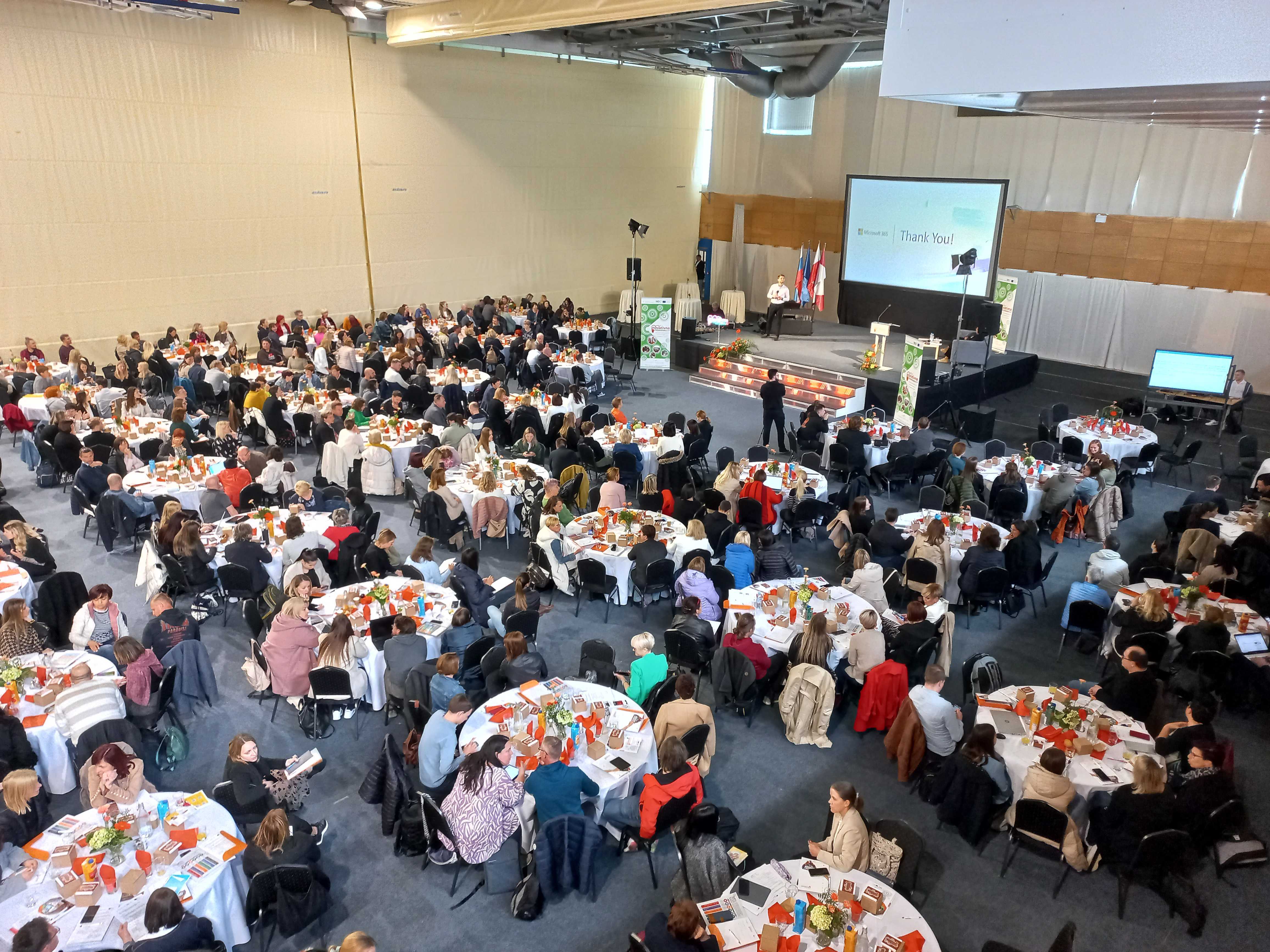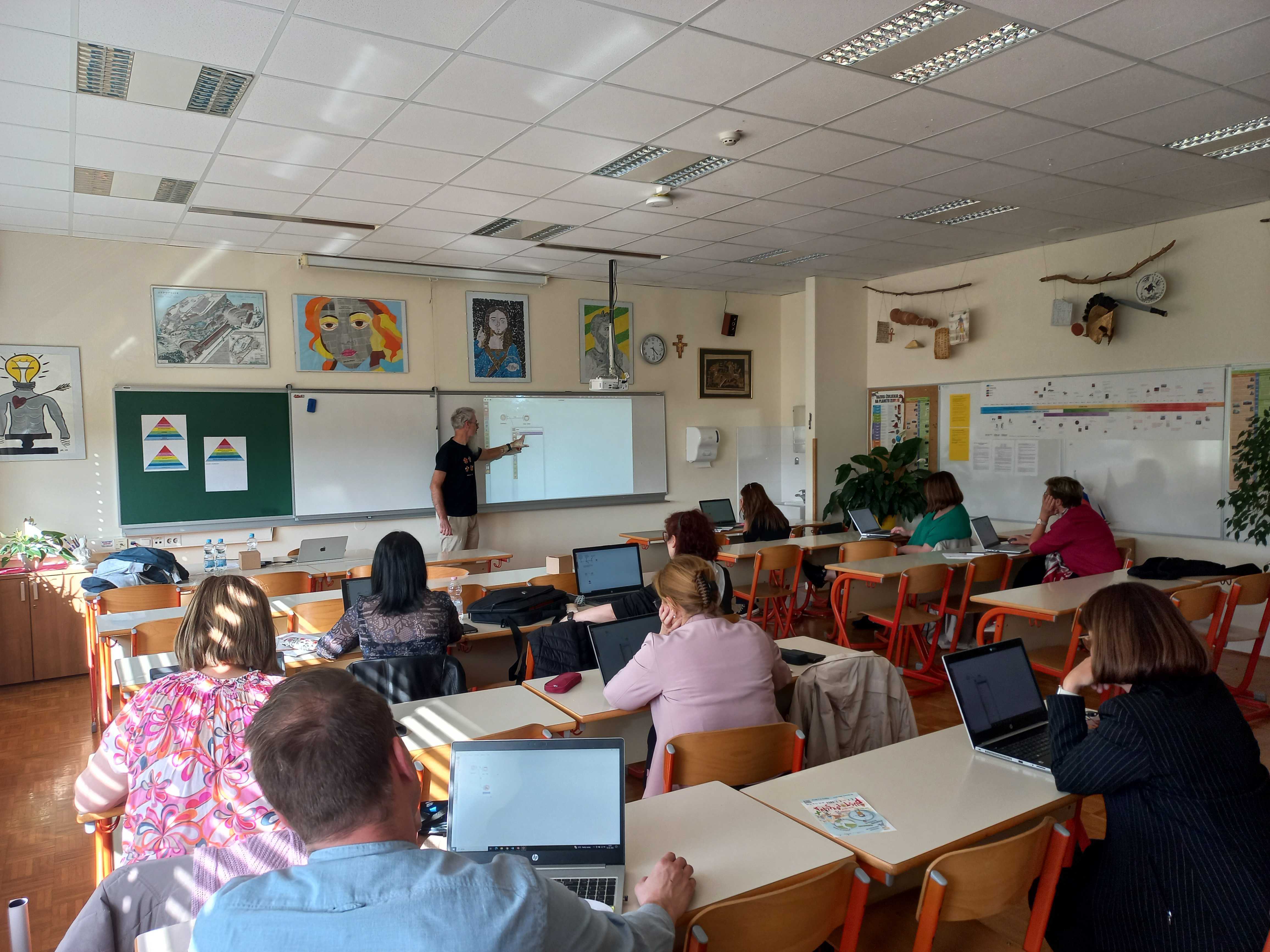
Playing with Data at Innovative Pedagogy 5.0
On the 18th and 19th of April, the University of Maribor organised the International Scientific Conference on Philosophy of Mind and Cognitive Modelling in Education – PCE 2024. The event was attended by over 350 participants, most of whom were primary and secondary school teachers from all around Slovenia. There were talks given by local and international lecturers, and we were especially drawn by the exhibition stands presenting different primary school projects and some interesting companies. In the afternoon of the second day of the conference, there were also several workshops organised for teachers – and that is where you could find us.
This time round, we put special attention to writing the invitation to our workshops to attract a broader range of teachers than just mathematicians. It worked. At the workshop, the most represented field was history(!), there were also some English and Slovene teachers, and others. We were of course very happy to also see that maths, physics, and information science teachers were still present, too. :) Both our workshops started with surnames (the Slovene Surnames activity), which we played around with for a while (we’ll return to this later in the post), and then – there was actually not a lot of time – we got to know the Orange Data Mining environment by attempting some first steps from our activity on the topic of Socio-Economic Characteristics of Countries.
We rounded up the workshops by (more or less rhetorically) asking the teachers whether they feel confident enough to take this activity into the classroom. Predictably, the answer was no. It wasn’t really a surprise. The purpose of the workshop was simply to show that data exploration is interesting and useful for teaching and educational activities, and that with a little time, it’s not impossible to learn.
Now back to the surnames, as we promised. Doing the Surnames activity with historians on board rocks! (The same would of course also be true for linguists, biologists, etc., if the activity topic was one closer to their fields.). The teachers quickly embraced the challenge: not only did they know very well when surnames were legally required on the territory that is now Slovenia (during the reign of Joseph II, at the end of the 18th cenury) and also immediately had it very clear that those with the surname Gorenc (Highlander) originally have no place in the Gorenjska region (Highlands), but they also taught us non-historians a lot of things we didn’t know.
For instance: the Bela Krajina region (White Carniola) used to belong to the Counts of Gorica. (I have to admit I didn’t know that, nor about the Counts of Gorica in general.) Later at home, I of course read upon it, and also learned that the counts had already lost those territories in the 15th century. That of course doesn’t exclude their influence on surnames in that region since relations don’t fade that quickly, but three hundred years is still a long time. The fact that it was probably easier to travel from Bela Krajina to Trieste via the southern side of Slovenia than reaching Ljubljana (from Bela Krajina) by travelling accross the hills of Gorjanci might have still been a greater factor on surname distribution.
We also found out that the Austrian and the Hungarian parts of the Austro-Hungarian Empire had different inheritance laws. I remember being taught at school about a law that limited inheritance to a single person in order to avoid the fragmentation of farms. At the workshop, a teacher of history told us that that was only the case in the Austrian, but not also in the Hungarian part of the empire. Consequently, farms in the Prekmurje region are smaller than those in Prlekija; as a result, the mighty houses of the Prlekija region are much better preserved than modest houses built by the economically weaker farmers of Prekmurje. And, what is even more noticeable: the roads in Prlekija wind around huge estates, while those in Prekmurje are «as straight as if they were drawn with a laser«.
Not only were we accompanied by historians in our workshops, there were also Slovene linguists among us. At some point, a teacher from Haloze marched to the big map of Slovenia in front of the class to explain and also show us some phonetic traits of Slovene dialects – more precisely, how the northern Slovene »ej«, pronounced »ay« in English (an amateur phonetic transcription of a Slovene phrase she gave us as an illustration would be: »Maysats yah svayteel tsayleeh dayn«, which translates as »The moon was shining all day.«), transforms into a »je«, pronouced more or less as »yuh«, once you move towards the south-west of Slovenia. Luckily, we also had a teacher from the Primorska region (which is located in the south-west of Slovenia) in the classroom, who was able to prove that by saying the same phrase in the Primorska dialect. And we then also found out from that same teacher that dona gracia in the Primorska dialect stands for a curtain rod.
Ok, we got a little carried away, sorry. So where were we again? Ah, yes, surnames. Well, that was the whole point of it all: data tells a story. A story that can lead to many places – especially, if the teacher is well-versed in their field and not afraid to stray from the main road.
We won’t forget this workshop any time soon.
